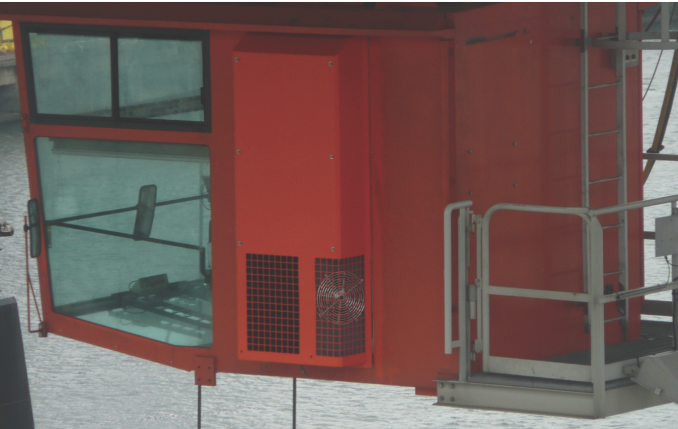Merford is less accessible during the holiday season. If you have a query during these days, please let us know at info@merford.com.
Operator cabin HVAC noise reduction
Merford Cabins (Our Sister Company) is the global market leader in STS cabins. This cabin model was designed for large quay cranes that load and unload container ships. Our STS cabins are mostly standardized and comply with the applicable port processes and the demands of time.
Overpressure and noise nuisance
Most of our STS cabins are fitted with an Industrial Climate Unit (also called HVAC). This HVAC provides the operator cabin with a pleasant working temperature, regardless of the outdoor climate. Another task of the HVAC is to fill the cabin with an overpressure, to reduce the likeliness of polluted air or dust entering the cabin. The full process of moving air is quite complex and consists of parts where the air clashes with other airflows, has to make U-turns, or gets detained. Sound is air in motion. Depending on the intensity, this motion could result in critical noise pollution.
Computer models
Sonobex made simulations to get an idea of the airflows in the cabin. This helped us to locate the weak spots in the process. With the data achieved, adjustments were made to the HVAC and the layout of the cabin to properly suppress the noise pollution. For instance, a void was discovered with a high density of airflows, that increased the counter pressure more than necessary. We secluded this spot with insulation material to help the airflows find their way better. Second, the air inlet was enlarged to reduce the airspeed of the air entering the HVAC, after which it goes past sound absorbing sheets. Third, we upgraded the sytem for the heated air flowing underneath the floor of the cabin to demist the front window. Thanks to the improvements described, the HVAC fan can reach the same goal with less rotations. This results in a reduction of noise and required energy.
Noise reduction
Merford Cabins benefited greatly from the knowledge of the Sonobex team and the simulations they use to map sound. Based on these calculations, almost all components in the HVAC, such as the heat block, the fan and the compressor, could be adjusted so that the sound level values meet general noise standards, regardless of the speed of the fan. Moreover, thanks to the measures taken, the cab can be produced more efficiently, the energy consumption is reduced and – perhaps most importantly – the operator will hardly be impeded in his or her work due to noise pollution.
